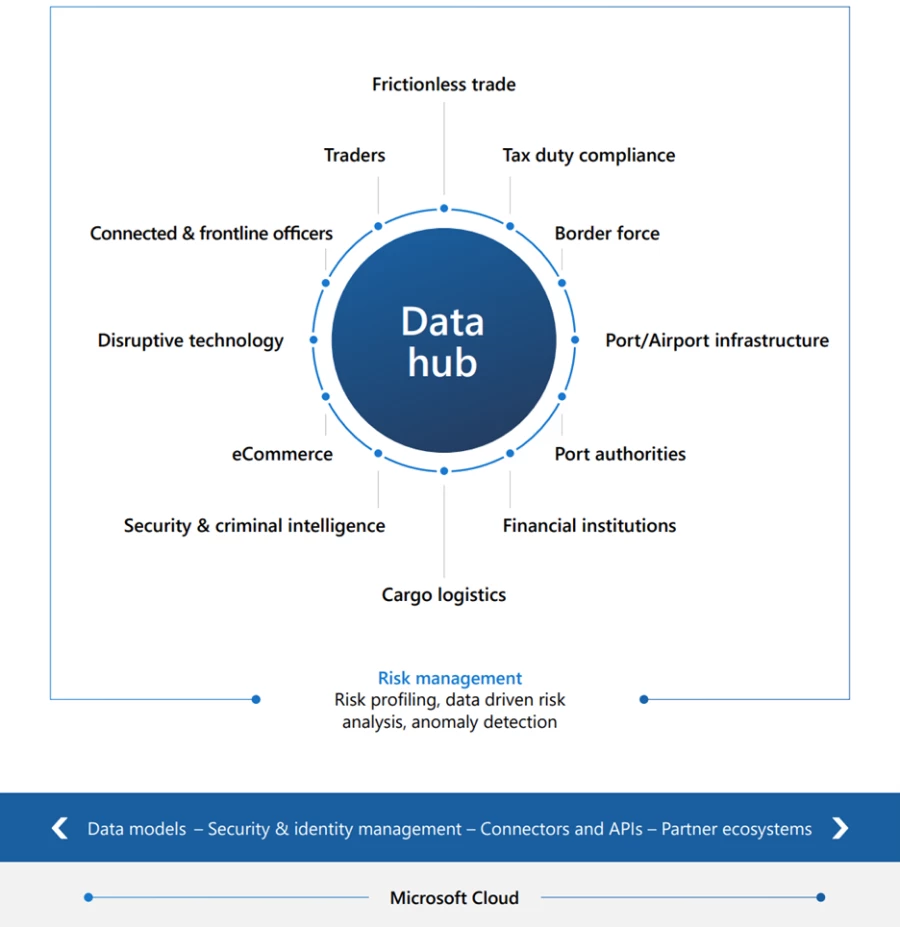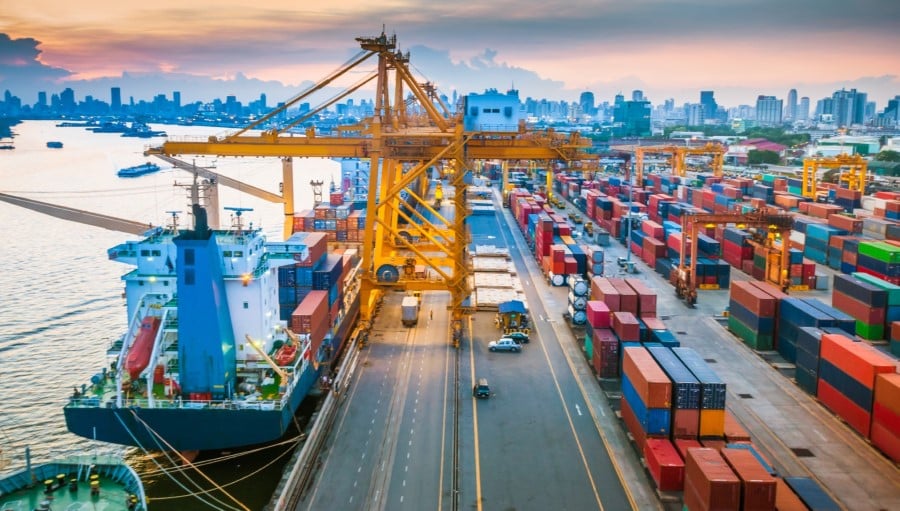Notizie per Categorie
Articoli Recenti
- Explore practical best practices to secure your data with Microsoft Purview 25 Aprile 2025
- New whitepaper outlines the taxonomy of failure modes in AI agents 24 Aprile 2025
- Understanding the threat landscape for Kubernetes and containerized assets 23 Aprile 2025
- [Launched] Generally Available: Instance Mix for Virtual Machine Scale Sets 22 Aprile 2025
- Microsoft’s AI vision shines at MWC 2025 in Barcelona 22 Aprile 2025
- [Launched] Generally Available: Announcing the Next generation Azure Data Box Devices 22 Aprile 2025
- [Launched] Generally Available: Cross-Region Data Transfer Capability in Azure Data Box Devices 21 Aprile 2025
- [Launched] Generally Available: Azure Ultra Disk Storage is now available in Spain Central 21 Aprile 2025
- [Launched] Generally Available: Azure Firewall resource specific log tables get Azure Monitor Basic plan support 21 Aprile 2025
- Hannover Messe 2025: Microsoft puts industrial AI to work 21 Aprile 2025
Delivering innovation in customs and port operations with Microsoft for Public Finance
Customs operations have always been complex. According to the United Nations Conference on Trade and Development Global Trade Update in March 2023, global trade reached more than $32 trillion in 2022, accounting for more than 57 percent of the world’s GDP.1 Recent years marked by COVID-19, global geopolitical conflicts, and energy crises, have resulted in three key trends which have further increased the complexity for customs and public finance organizations.
- Trade fragmentation. This trend, coupled with major technological disparities across markets, can affect global growth by reducing trade flows, creating silos and sectoral misallocations, and hindering the foreign diffusion of knowledge. The estimated cost of fragmentation could range from 1.2 to 12 percent of global GDP.2
- Growing trade of services. The international exchange of ideas, expertise, and assistance—from architecture and law to logistics and telecommunications—account for half of all global exports and two-thirds of global GDP.3 Tracking these import and export transactions is challenging for customs agencies.
- Crime is moving online and growing in sophistication. Cyber-enabled financial crimes, such as business email compromise, executive fraud, e-commerce scams, and investment fraud, have escalated in nearly every region. Today’s ransomware attacks target ‘big game’ targets, including major corporations, governments, and critical infrastructure.
These trends hinder progress and growth within customs and port authorities and addressing them requires immersive data management and cooperation.

Public finance solutions
Help reignite the economy and drive financial accountability.
The importance of immersive data management for customs and ports
Immersive data management starts with a customs and port authority data hub. Data will drive the digital customs of the future, and a data hub provides real business insights and enables better decision-making. A data hub aggregates customs data into one place, applies AI and machine learning analytics, and visually displays the information to the right person, at the right time, in the right place, and on the right device.
While the aggregated data provides one version of the truth, it also serves other purposes:
- Provides insight into the tax compliance of a trade, linking all the associated documents so that 80 percent of trusted trade can be processed automatically. This enables customs officials to focus their efforts on the other 20 percent of ‘suspect’ trade.
- Provides insight into cross-border trading, combining the customs documents with other data points to enable officers to better target their intervention resources.
- Supports the optimization of portside cargo logistics. For example, it can enable an understanding of where unloading equipment is in relation to a ship docking, or uncover the most efficient way to get from the ship to market using trains, trucks, and other modes of transportation.
- Unlock insights into risk using advanced AI analytics to identify anomalous behavior, changes in trading trends, suspect activities, and more.
- Gives insight into the overall sustainability picture, from port and airport energy emissions through the entire supply chain.
The power of cloud technology, like that of the Microsoft Intelligent Data Platform, coupled with advanced AI analytics and human decision-making, can make this possible.

Innovation unlocked by immersive data management
- Understanding risk: Understanding risk is one of the biggest challenges for customs agencies. Improved targeting capabilities allow better resource allocation and reduce overall risk. This applies to safe and fair-trade facilitation as well as to border protection.
Data analytics, AI, and machine learning capabilities, like Microsoft Azure Machine Learning, can assimilate and take action on this risk information in an effective and timely manner. The data hub can ingest data and add it to existing customs documentation to provide improved risk profiling. Examples include:
- Understanding the movement of thousands of ships and people across the globe.
- Tracking activities within ports and airports.
- Tracking vehicles using automatic number-plate recognition (ANPR) systems.
- Identifying anomalous behavior.
A data hub also helps create an ecosystem of trust to onboard authorized economic agents as needed, and innovative distributed ledger technology, like Microsoft Azure confidential ledger, makes it possible.
- Gaining real-time intelligence: Seamless operations require real-time intelligence on activities in and around the port. Deploying the Internet of Things (IoT) sensors across a port can provide unprecedented insight into real-time occurrences. Sensors can be deployed on cranes, vehicles, buildings, energy generators, containers, ships, tugs, people, and more.
- Enabling remote operations: Creating a digital twin of a port can enable better understanding and management of operations remotely. With IoT sensors placed in different locations and on many pieces of equipment, port authorities can create a 3D map of the entire environment. These signals can be sent to enterprise resource planning (ERP) and customer relationship management (CRM) platforms via Remote Assist in Microsoft Dynamics 365 to remediate incidents or track resource allocation for remediation.
- Promoting sustainable operations: IoT sensor data can also be combined with a customs warehouse building energy management system (BEMS). This provides invaluable insight into how the buildings are being used to identify opportunities for more sustainable processes.
- Increasing supply chain visibility and efficiency: The Microsoft Supply Chain Platform, with the Supply Chain Centerat its core, provides a “command center” experience for practitioners to harmonize data from across existing supply chain systems. Its data manager harmonizes and orchestrates data to provide visibility across the supply chain and drive action back into systems of execution.

Real-life examples of innovation in customs and ports
Innovation—powered by immersive data management—connects people and technology in an integrated manner to enable intelligent port orchestration and deliver real business outcomes. Customs and port agencies are starting to leverage AI and machine learning technologies to transform their businesses, starting first with a focus on desired business outcomes:
- European Maritime Safety Agency: With our partner, Codit, the European Maritime Safety Agency adopted an Azure-based Maritime Data Platform. This enables authorities to have insights into shipping patterns using geospatial imagery made available by Microsoft and Airbus.
- Maersk: Maersk uses IoT devices on their containers—with Remote Container Management System on Azure—to track and monitor refrigerated shipping containers as they move across the globe. They leverage IoT data insights to optimize internal operations and create new projects.
- Project SEEKER: Project SEEKER is a first-of-its-kind multispecies AI model developed using Azure machine learning services to combat smuggling and wildlife trafficking. It enables x-ray scanning that automatically detects illegally trafficked wildlife concealed within luggage and cargo. Wildlife trafficking often goes hand in hand with other organized crimes, including corruption and money laundering.
- Ports of Jersey: The Ports of New Jersey benefit from multifaceted uses of The Bot Platform to connect and keep engaged a distributed workforce.
- Microsoft Electronic Invoicing Anomaly Detector Accelerator (e-IAD): The e-IAD Accelerator is a practical example of how agencies can use Microsoft AI and machine learning at scale—within a tax and customs agency—using electronic invoicing data. Agencies can leverage insights to uncover patterns of anomalous activity that help improve revenue collection. The e-IAD Accelerator is the result of collaboration with the Inter-American Center of Tax Administrations and leaders from tax agencies around the world.
Enabling digital customs of the future
Customs is complex and adopting new technology can be daunting for many agencies. Microsoft can help agencies transform operations with a focus on business outcomes. Now is the time for customs organizations to adopt an intelligent data platform, embrace AI and machine learning, IoT, and explore other modern technology like virtual and mixed reality, blockchain, drones, and more.
Discover more
To learn more about how Microsoft supports customs and port authorities innovate their operations, read our whitepaper, Digital Customs of the Future.

Digital Customs of the Future
Supporting customs and port authorities to innovate their operations.
1 UNCTAD, Global Trade Upgrade (March 2023).
2 International Chamber of Commerce, ICC 2023 Trade Report: A fragmenting world, April 6, 2023.
The post Delivering innovation in customs and port operations with Microsoft for Public Finance appeared first on Microsoft Industry Blogs.
Source: Microsoft Industry Blog
